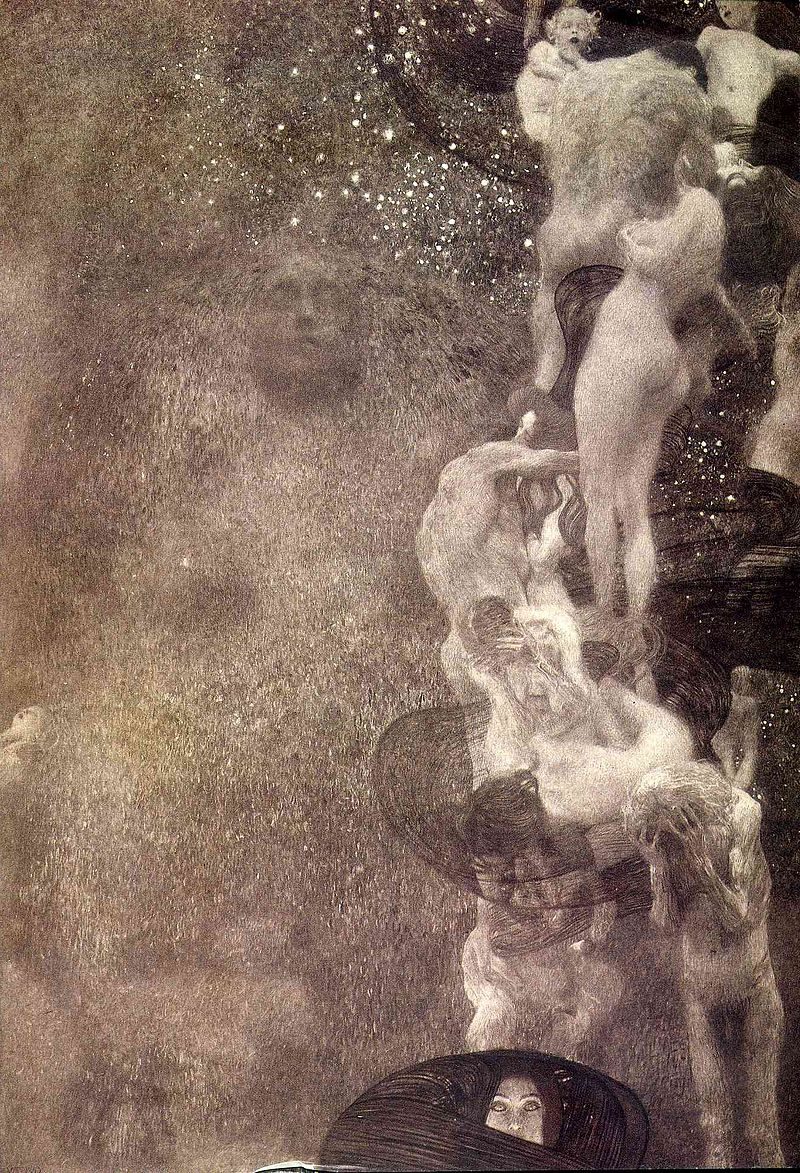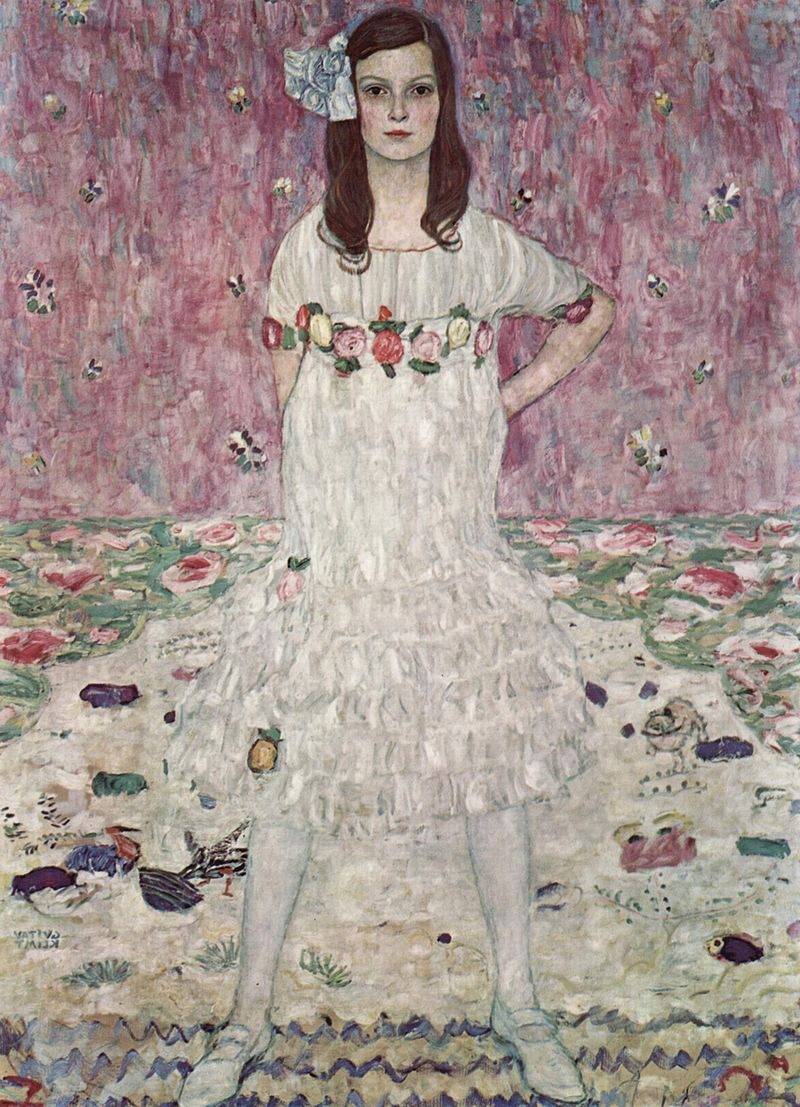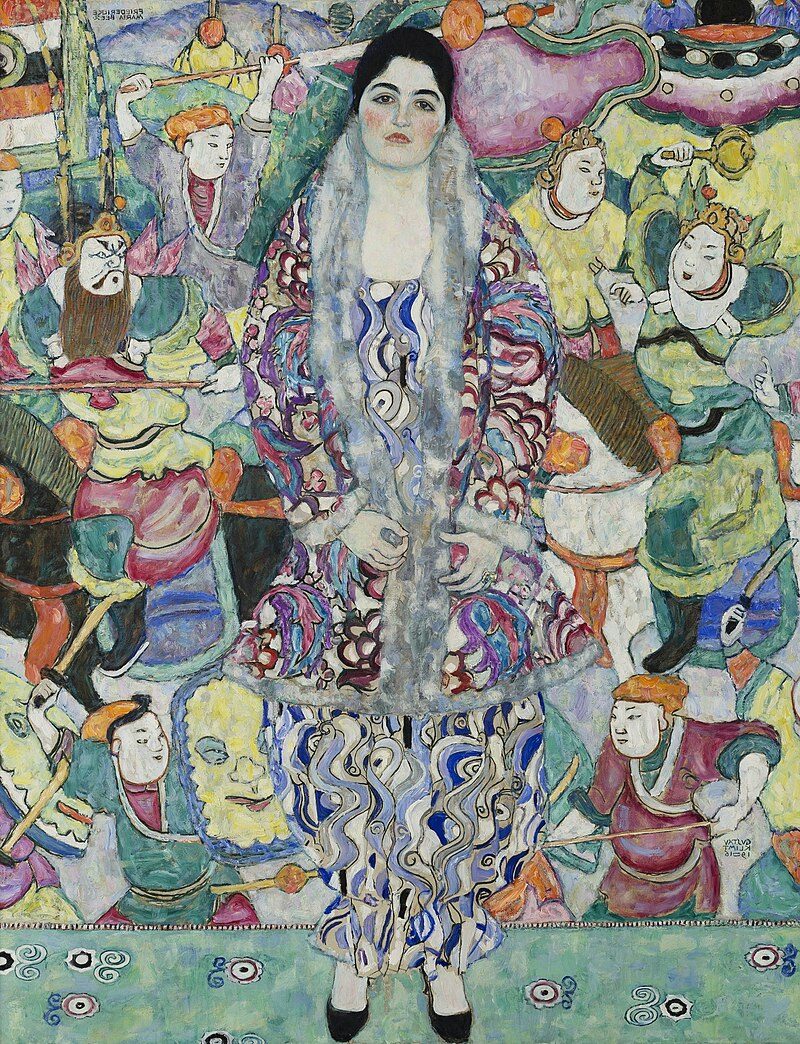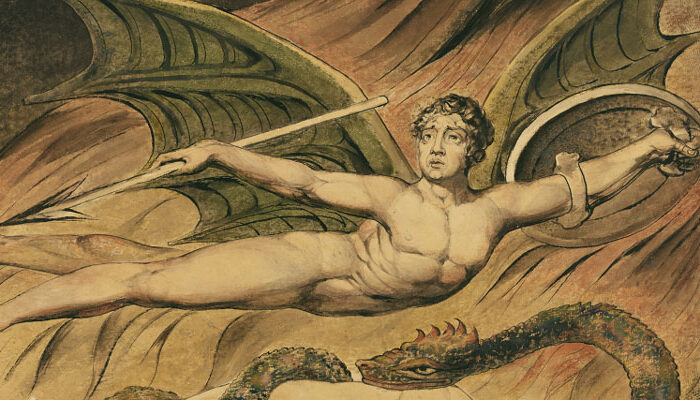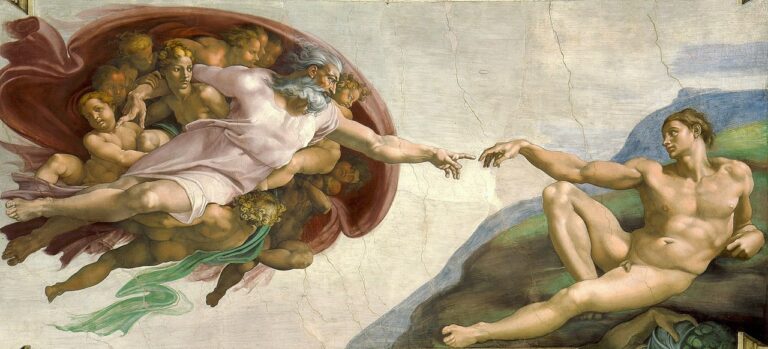Gustav Klimt Paintings: A Journey Through Symbolism and Artistry
Born: 14 July 1862, Baumgarten, Austrian Empire
Death: 6 February 1918, Vienna, Austria-Hungary
Art Movement: Symbolism, Art Nouveau
Nationality: Austrian
Institution: Vienna Kunstgewerbeschule (University of Applied Arts Vienna)
Gustav Klimt Paintings: A Journey Through Symbolism and Artistry
Life and Career of Gustav Klimt
Gustav Klimt, a prominent Austrian Symbolist painter, was born on 14 July 1862 in Vienna. He was well-known for exploring the female form in art.
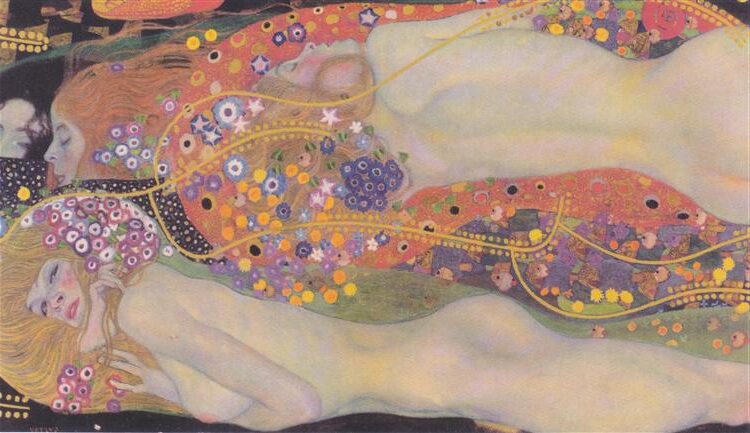
Water Snakes II (1907) by Gustav Klimt
His early career began with the formation of the Company of Artists, which completed various mural commissions.
In 1897, Klimt became a co-founder of the Vienna Secession Movement, a group dedicated to representing Modernism and rejecting traditional art. As part of this group, Klimt’s work gained a decorative quality, diverging from academic styles.
One of his crucial projects was painting images for the old Burgtheater, a commission from Vienna’s city council.
Klimt’s career was marked by his signature style, often incorporating gold and intricate patterns, as seen in works like The Kiss and Portrait of Adele Bloch-Bauer I. His work earned him the Golden Order of Merit from Emperor Franz Josef I of Austria.
His legacy includes not only paintings but murals and sketches, many of which focus on allegories and portraits laden with symbolic meaning. His contributions significantly influenced European art transitions during his time, cementing his status in art history.
Major Themes and Artistic Style
Gustav Klimt’s art is characterized by a fusion of Symbolism and Art Nouveau, showcasing themes of eroticism and the portrayal of the female body. His work often combines traditional and modern elements, including intricate patterns and vibrant colors.
Symbolism and Art Nouveau Influence
Klimt was a central figure in the Vienna Secession movement, which embraced Symbolism and Art Nouveau. His paintings are known for their decorative style and symbolic depth.
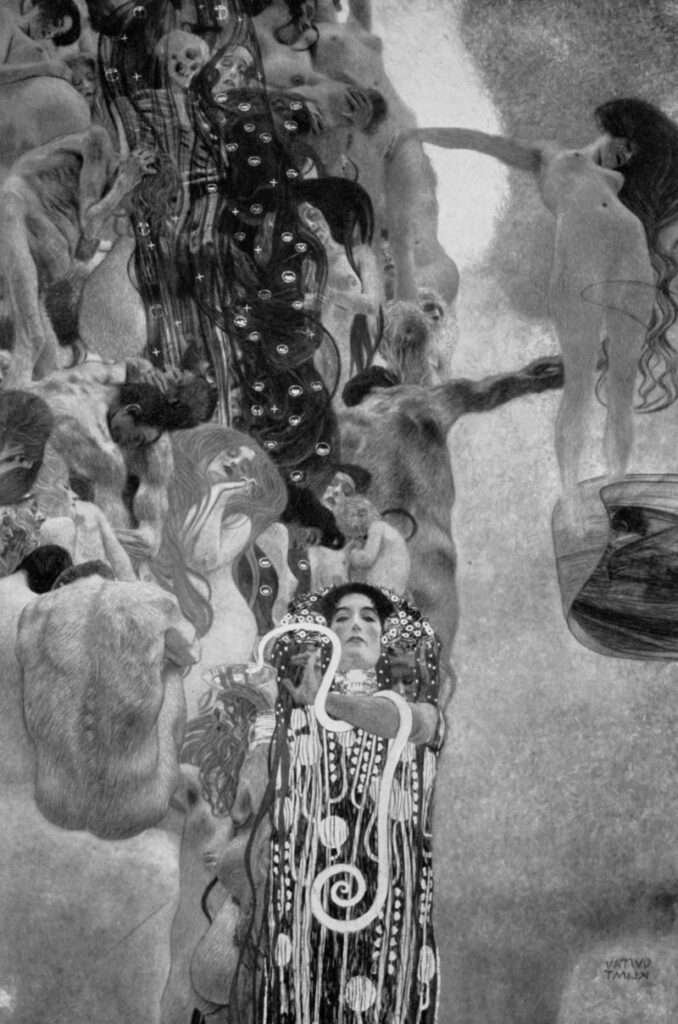
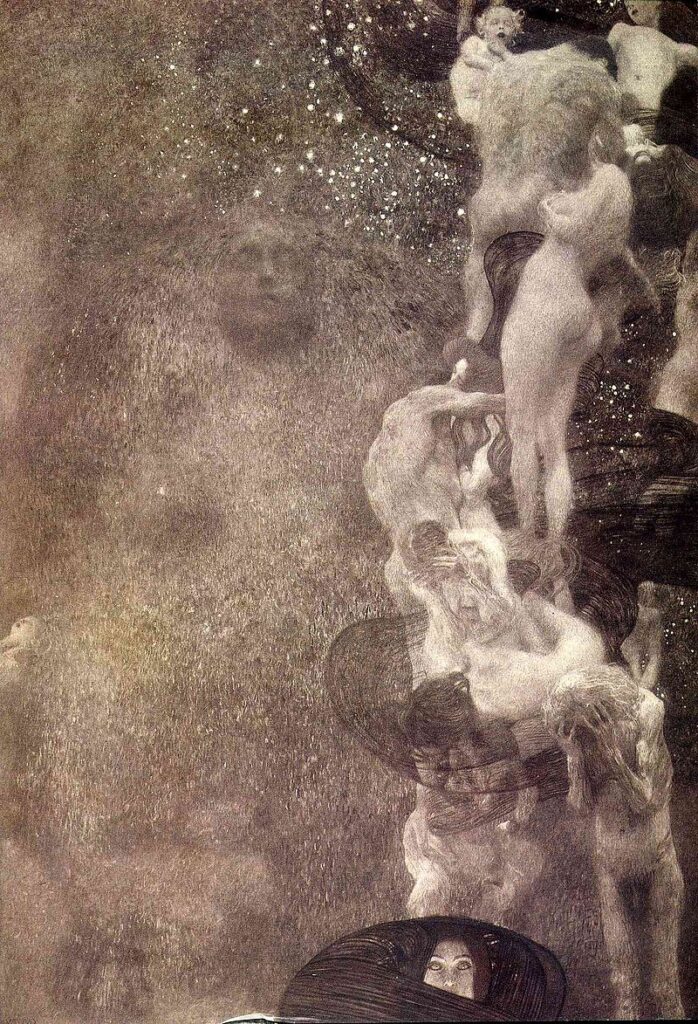
Artworks like The Three Ages of Woman and Portrait of Adele Bloch-Bauer I exemplify this blend of ornate design and profound meaning.
Klimt’s use of gold leaf is particularly notable in these pieces. The luxurious texture and shine evoke an otherworldly feel, drawing the viewer into the symbolic narrative.
Symbolic and allegorical paintings can be seen throughout his work, where motifs like the tree of life or flowing water represent deeper themes of life, death, and renewal.
Eroticism and The Female Body
Klimt often explored themes of sensuality and femininity. His portrayals of the female body are both intimate and complex, capturing beauty and strength.
In works such as Nuda Veritas and Judith and the Head of Holofernes, Klimt highlights eroticism with expertly crafted detail and expressive poses.
These paintings often challenge societal norms of the time, offering a liberated view of sexuality. Klimt’s erotic subjects frequently incorporate mythological and historical references, which provide layers of interpretation. By integrating these elements, Klimt’s art remains both controversial and celebrated for its bold depiction of human desires.
Iconic Works and Their Significance
Gustav Klimt’s works feature bold use of gold leaf, expressive portrayal of human emotion, and often controversial themes. His paintings not only stand as masterpieces of the Vienna Secession but also symbolize deeper cultural and personal meanings.
The Kiss: A Symbol of Love
The Kiss is one of Klimt’s most famous works, completed between 1907 and 1908. It depicts a couple locked in a passionate embrace.


The painting is renowned for its lavish use of gold leaf, adding a shimmering, dreamlike quality. This piece reflects eternal love and intimacy, with its intricate patterns symbolizing the unity of the couple.
Klimt’s The Kiss embodies a blend of eroticism and tender emotion, capturing universal themes of romance. The couple, ensconced within a mosaic-like surrounding, appears to radiate warmth and affection, offering viewers a complex visual experience that continues to captivate audiences worldwide.
Portrait of Adele Bloch-Bauer I: The Lady in Gold
The Portrait of Adele Bloch-Bauer I, created in 1907, is another work rich with gold leaf detail. It’s often referred to as “The Lady in Gold.”
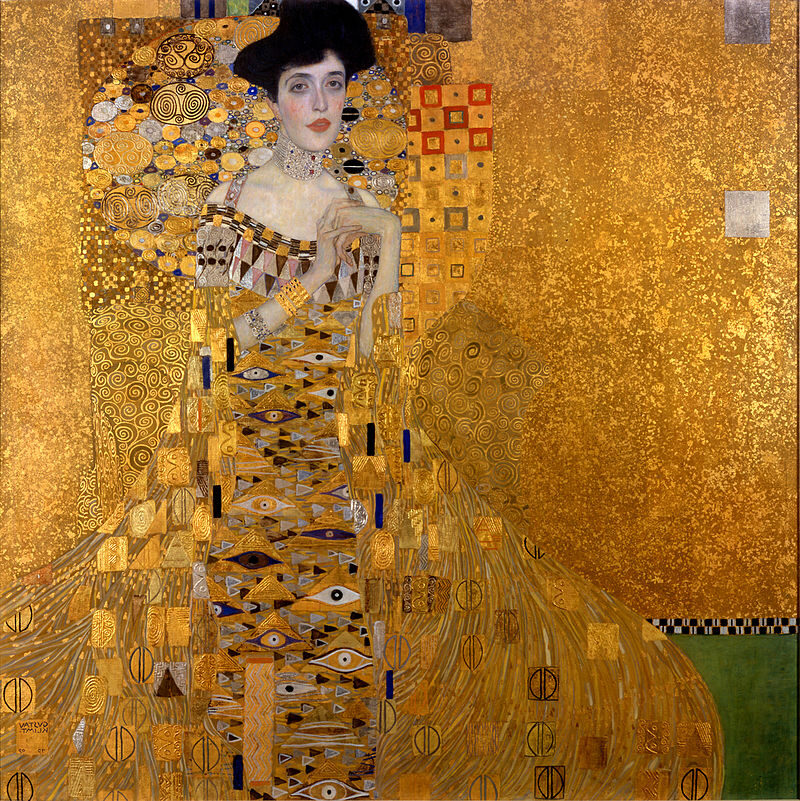

This portrait signifies both Klimt’s masterful technique and the cultural milieu of Vienna. Adele Bloch-Bauer, a prominent Viennese socialite, was depicted with luxurious patterns and vibrant textures.
This painting represents a pinnacle of the Art Nouveau style and stands out for its elegance and depth. The portrait’s allure, combined with its rich historical context, has made it a subject of intrigue, especially following its dramatic restitution story and portrayal in various media, including film.
The Beethoven Frieze: A Tribute to Beethoven
The Beethoven Frieze was created in 1902 for an exhibition celebrating composer Ludwig van Beethoven. Klimt designed the frieze as a visual symphony, accompanied by a choir performance of Beethoven’s Ninth Symphony.

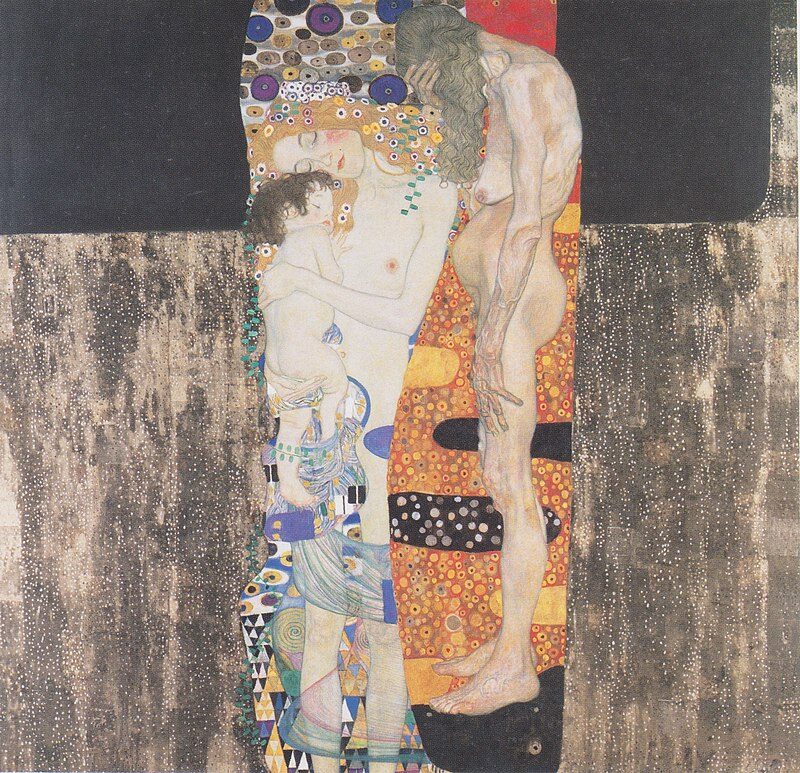
Each panel of the frieze tells parts of a story reflecting the pursuit of happiness and enlightenment.
This work is notable for its allegorical representation and intricate design. Klimt’s intricate patterns and symbolic figures emphasize humanity’s struggles and aspirations. The frieze remains an essential part of the Vienna Secession Building, showcasing Klimt’s innovative approach to merging music and visual art.
The Vienna University Murals Controversy
Klimt’s murals for the University of Vienna, particularly the Philosophy, Jurisprudence, and Medicine panels, sparked significant controversy. Known as the Faculty Paintings, these works were rejected for their explicit content and challenging themes.
Klimt used these murals to explore complex ideas, including Death and Life.
The rejection led to a public debate about artistic freedom and morality. Despite the outcry, these paintings are considered some of Klimt’s finest examples of his bold style and thematic depth. Unfortunately, the original frescoes were destroyed during World War II, but they live on through sketches and descriptions.
The Golden Phase and Later Works
Gustav Klimt’s “Golden Phase” is characterized by his innovative use of gold leaf and intricate patterns. This period, alongside his interest in landscapes, set the stage for his later works. Klimt’s art evolved over time, reflecting a shift from decorative opulence to more somber themes and explorations.
Influence of Gold and Decorative Patterns
During the Golden Phase, Klimt often used gold leaf, giving his paintings a luminous, otherworldly quality. This luxurious material enhanced the elegance and intricate details of his works.
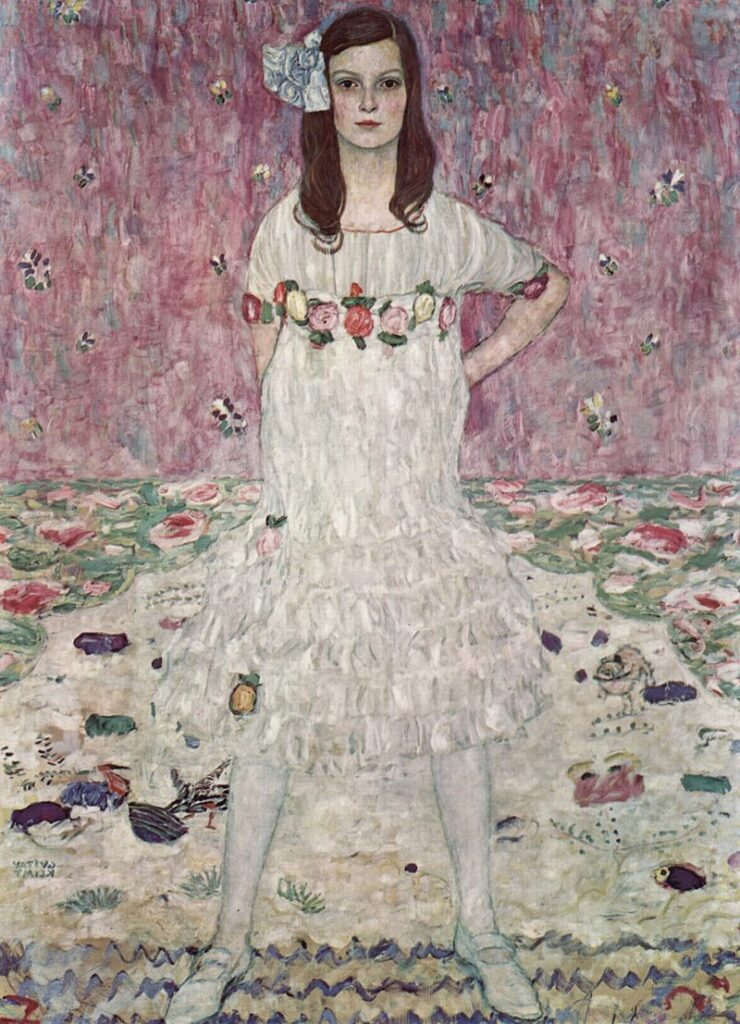
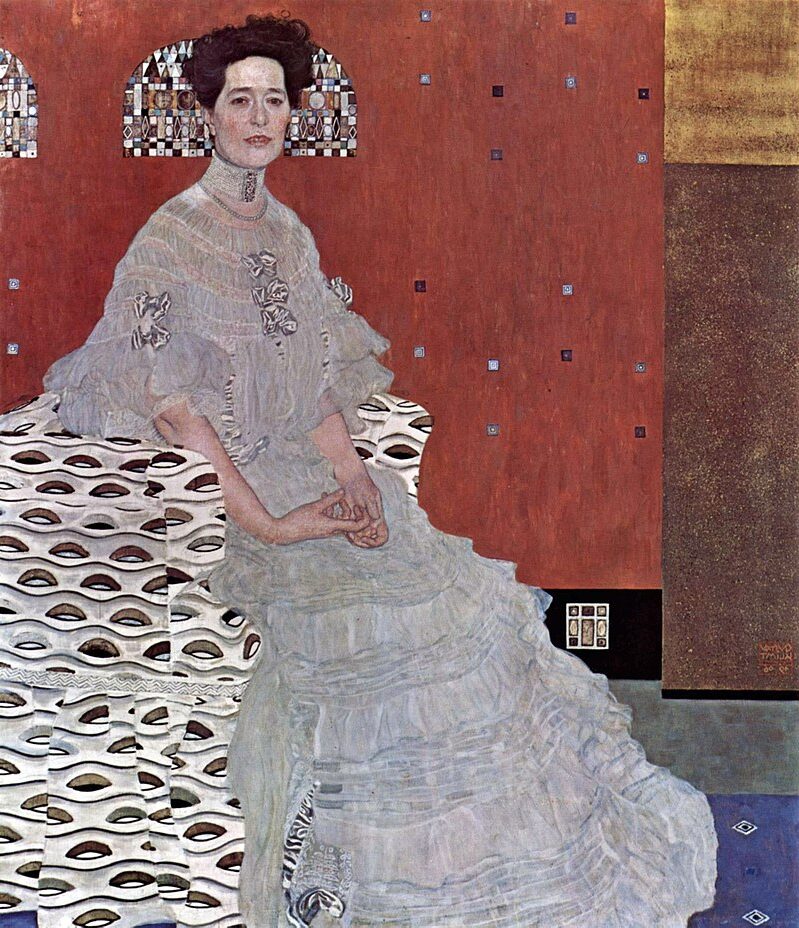
One of the most iconic pieces from this period is “The Kiss,” which exemplifies the blend of gold and elaborate patterns.
Klimt’s inspiration partly came from Byzantine mosaics, which he admired during his travels. Paintings like **”The Stoclet Frieze,” housed in the Palais Stoclet, feature complex designs with swirling motifs and detailed figures.
Sections titled “Fulfillment” and “Expectation” show Klimt’s mastery of decorative art, blending symbolism and rich color palettes.
Landscapes and Nature Representation
Beyond his portraits, Klimt painted landscapes, focusing on vibrant scenes and natural beauty. He found inspiration in the areas around Lake Attersee, often painting from varying perspectives.
His landscape works include vivid depictions of floral meadows and serene lake views.
These pieces showcase Klimt’s ability to capture the essence of nature with a restrained use of gold. Works like “The Park” emphasize rich textures and vivid colors. The natural elements provided a fresh and tranquil diversion from his intense focus on human figures during other periods.
From Golden Period to Late Works
As Klimt moved beyond his Golden Phase, his focus shifted to more somber and contemplative themes. His later works explored human experiences more deeply, using darker palettes and bolder forms.
Pieces such as “Death and Life” and “Hope II” showcase a shift in tone, reflecting themes of mortality and existence.
His painting “Danaë” illustrates themes of desire and myth, yet with a darker undertone compared to earlier radiant works. Klimt’s exploration in these periods reflects his capacity for growth and change, ultimately leaving a lasting impact on the art world.
Influence and Legacy in Art History
Gustav Klimt’s work revolutionized how art could express emotion and personal vision. His influence is seen not only in his direct successors and proteges but also in the widespread recognition his pieces gained internationally, shaping modern and contemporary art today.
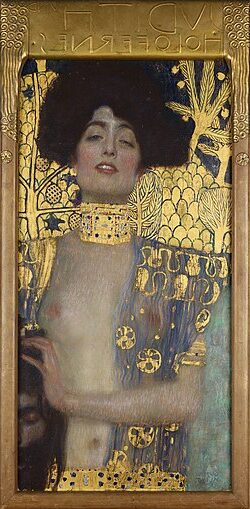
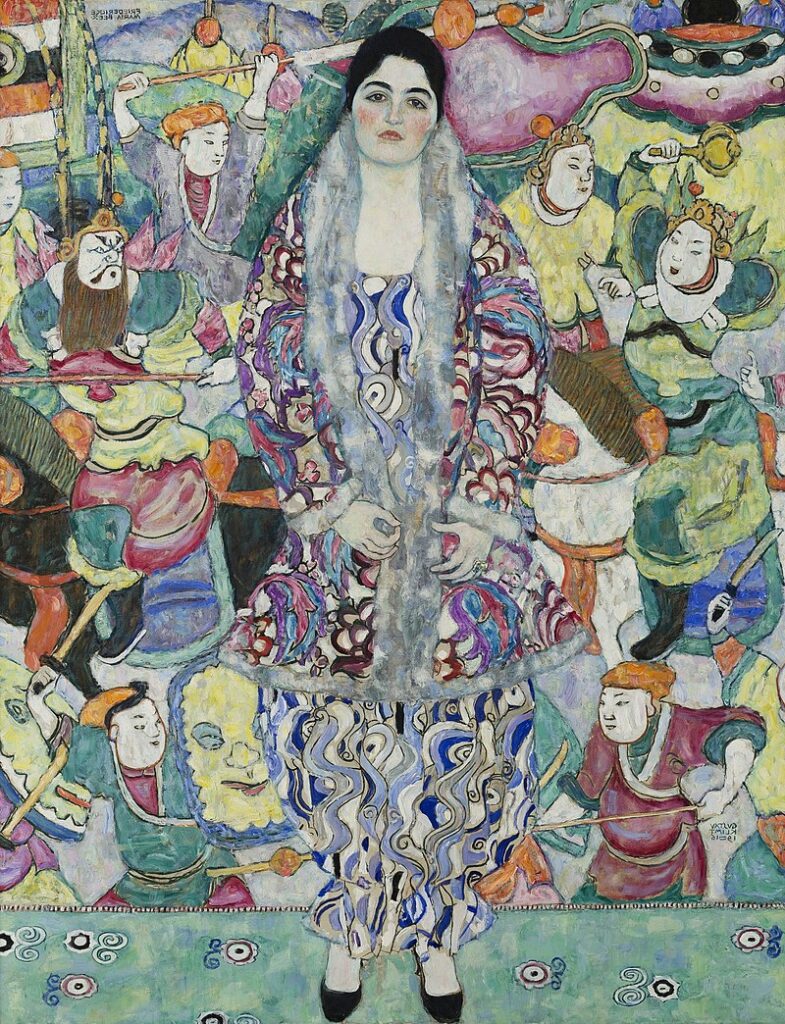
Successors and Proteges
Klimt’s unique style and groundbreaking techniques inspired many artists who followed him.
Among his most notable proteges was Egon Schiele, a fellow Austrian painter known for his bold lines and expressive forms. Schiele was deeply influenced by Klimt’s attention to detail and use of sensual, symbolic themes.
Femme Fatale, a recurring theme in Klimt’s work, also appeared in the pieces of numerous artists inspired by him. These works often explored the powerful and enigmatic nature of women.
Emilie Flöge, who significantly influenced Klimt, also impacted the world of fashion, contributing to the modernist movement.
International Exhibitions and Recognition
Klimt’s art received widespread attention at international exhibitions, significantly enhancing his legacy.
His works were featured prominently in the International Exhibition in Rome, where they were celebrated for their innovative style and bold use of color and symbolism.
The Galerie Würthle in Vienna held exhibitions of Klimt’s work, showcasing the transformative power of his compositions.
This recognition extended beyond Europe, influencing Japonism and inspiring artists like Edvard Munch with its unique blend of form and subject.
Institutions and audiences around the world continue to admire his contributions to the arts.
Klimt’s Impact on Modern and Contemporary Art
Gustav Klimt’s impact on modern and contemporary art is profound, with his approach to decorative art and painting reshaping artistic directions.

Schubert at the Piano (1899) by Gustav Klimt
Klimt’s architectural decorations, such as those in the Burgtheater, blend organically with trends in modern art, embracing abstract elements and vivid aesthetics.
His use of gold leaf, as seen in pieces like Pallas Athene and Goldfish, set new standards for ornamental art.
Klimt’s exploration of themes like Music I and Sappho, along with his intimate Portrait of Emilie Flöge, continues to resonate in contemporary pieces that emphasize individuality and emotive depth.
Frequently Asked Questions
Gustav Klimt’s artworks are celebrated for their unique style and influence on modern art. His paintings, especially portraits of women, are known for their distinct characteristics and themes. Various museums around the world house his renowned pieces, and his legacy continues to be honored in contemporary culture.
How did Gustav Klimt’s techniques influence modern art?
Gustav Klimt’s use of gold leaf and intricate patterns brought a decorative elegance to his work that has inspired countless artists.
His unique blend of symbolism and ornamental style opened new avenues for explorations in contemporary art, encouraging artists to experiment with texture and opulence.
What are the estimated prices for original Gustav Klimt paintings?
Original Klimt paintings are highly valued in the art market, with prices often reaching millions of dollars.
For example, his painting “Adele Bloch-Bauer I” was sold for around $135 million in 2006, making it one of the most expensive paintings ever sold.
Which museums house the most significant collections of Gustav Klimt’s work?
The Belvedere Museum in Vienna holds many of Klimt’s masterpieces, including “The Kiss.” The Neue Galerie in New York also has notable works.
Additionally, the Leopold Museum and the Albertina in Vienna feature several of his paintings, reflecting his lasting impact on the art world.
What are some of the defining characteristics of Gustav Klimt’s paintings of women?
Klimt’s portraits of women often feature elaborate patterns and bold use of color. These paintings highlight femininity and sensuality, with a focus on capturing intricate details. His portrayal of women is both intimate and decorative, combining realism with symbolic expression.
How has Gustav Klimt’s legacy been preserved in contemporary culture?
Klimt’s influence is evident in modern design and fashion. His works inspire contemporary artists and designers who draw from his use of color and ornamentation. Reproductions of his art are popular in home decor, maintaining his presence in everyday life.
What are the common themes across Gustav Klimt’s body of work?
Themes of love, beauty, and death frequently appear in Klimt’s work. He explored the human condition through sensual and symbolic imagery. His art often provides a commentary on life and human experiences. It emphasizes the aesthetic connection between life and art.



